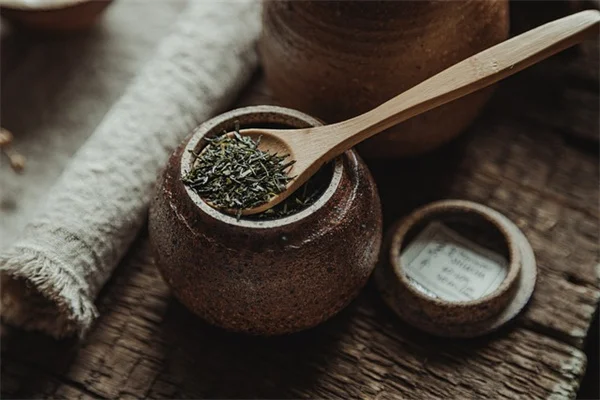Advertisement
Can vampire facials transmit HIV? The shocking answer is yes - when performed improperly. A recent CDC investigation confirmed three women contracted HIV from vampire facials at an unlicensed New Mexico spa, marking the first documented cases of HIV transmission through cosmetic injections. Here's what we know: these trendy facials become dangerous when facilities reuse needles or skip sterilization. But before you swear off cosmetic procedures forever, understand this - the risk comes from unlicensed providers, not the procedure itself. Licensed medical spas using proper protocols have an excellent safety record. I'll walk you through exactly how to protect yourself while still enjoying these popular treatments.
E.g. :Colonoscopy Frequency: When Can You Wait 15 Years Between Screenings?
- 1、The Shocking Truth About Vampire Facials and HIV
- 2、Vampire Facials 101: What You're Really Signing Up For
- 3、Safety First: How to Protect Yourself
- 4、Beyond Vampire Facials: The Bigger Picture
- 5、The Future of Cosmetic Safety
- 6、The Hidden Dangers in Your Beauty Routine
- 7、When Natural Doesn't Mean Safe
- 8、Your Skin's Worst Enemies
- 9、Beauty Industry Secrets Exposed
- 10、Smart Beauty Shopping
- 11、FAQs
The Shocking Truth About Vampire Facials and HIV
When Beauty Treatments Turn Dangerous
Imagine going in for a routine cosmetic procedure and ending up with a life-changing diagnosis. That's exactly what happened to three women in New Mexico who contracted HIV after getting vampire facials at an unlicensed spa. The CDC's recent investigation reveals how these trendy treatments can go terribly wrong when proper safety measures aren't followed.
Here's what went down: The spa reused needles and didn't follow basic sterilization protocols. This created the perfect storm for bloodborne pathogens to spread. While we often associate HIV transmission with unprotected sex or needle sharing, this case proves that cosmetic procedures can be just as risky when performed improperly.
Breaking Down the Investigation
The CDC tracked 59 clients who visited "Spa A" between 2018-2023. Check out these eye-opening numbers:
| Procedure Type | Number of Clients | HIV Cases |
|---|---|---|
| Vampire Facials | 20 | 3 |
| Other Injectables (Botox, etc.) | 39 | 0 |
Notice something interesting? While more people got Botox than vampire facials, all the HIV cases came from the PRP treatments. Why? Because vampire facials involve direct blood handling - drawing it, processing it, and reinjecting it. Each step presents infection opportunities if equipment isn't properly sterilized.
Vampire Facials 101: What You're Really Signing Up For
 Photos provided by pixabay
Photos provided by pixabay
The Science Behind the Hype
Ever wondered why they call it a "vampire" facial? The procedure involves taking your own blood, spinning it in a centrifuge to concentrate the platelets, then injecting this platelet-rich plasma (PRP) back into your face using tiny needles. It's like giving your skin a supercharged nutrient cocktail!
Dermatologists love PRP because it's packed with growth factors that stimulate collagen production. We're talking real benefits here: reduced wrinkles, faded acne scars, and that coveted "glow" everyone's chasing. But here's the million-dollar question: Is that youthful glow worth risking your health for? The answer becomes clear when you consider that licensed facilities using proper protocols have an excellent safety record with these procedures.
Celebrity Influence vs. Reality
Remember when Kim Kardashian posted that infamous bloody-faced selfie back in 2013? That viral moment sent demand for vampire facials through the roof. But here's what most people don't know - Kim later admitted regretting the procedure!
While the treatment can deliver real results, the recovery isn't always glamorous. You might experience:
- Temporary redness (like a bad sunburn)
- Mild swelling (hello, chipmunk cheeks!)
- Some pinpoint bleeding (hence the "vampire" nickname)
Safety First: How to Protect Yourself
Choosing the Right Provider
Here's the golden rule: Never get injected by someone who isn't properly licensed. I can't stress this enough. A legit medical spa will:
- Have board-certified professionals on staff
- Use single-use, disposable needles
- Maintain meticulous sterilization protocols
- Keep detailed client records
Dr. William Schaffner from Vanderbilt University puts it perfectly: "HIV transmission in healthcare settings only happens when there are flagrant deviations from standard practices." In other words - this outbreak was completely preventable.
 Photos provided by pixabay
Photos provided by pixabay
The Science Behind the Hype
You might be wondering: Should people with HIV avoid cosmetic procedures altogether? Not necessarily! With proper viral suppression treatment and sterile techniques, even HIV-positive individuals can safely receive vampire facials. The key is finding a facility that follows rigorous infection control measures.
Here's some good news - when performed correctly in licensed facilities, vampire facials have an excellent safety record. The New Mexico cases represent the first documented instances of HIV transmission through cosmetic injections. That's why choosing your provider carefully matters so much.
Beyond Vampire Facials: The Bigger Picture
Other Risky Cosmetic Procedures
While vampire facials made headlines, they're not the only treatments that carry infection risks. Any procedure that breaks the skin - from Botox to laser treatments - can potentially transmit bloodborne pathogens if proper precautions aren't taken. The table below shows how different treatments compare:
| Procedure | Infection Risk Level | Why? |
|---|---|---|
| Vampire Facial | High | Involves blood handling |
| Botox | Medium | Needle penetration |
| Chemical Peel | Low | No needles used |
Your Action Plan
Before booking any cosmetic procedure, do your homework! Here's my three-step checklist:
- Verify the provider's license (your state's medical board website can help)
- Ask about their sterilization procedures (don't be shy - your health is at stake!)
- Check reviews and look for any red flags about cleanliness
Remember, if a deal seems too good to be true, it probably is. That $99 vampire facial might cost you far more than you bargained for. As the saying goes: "Pay now for quality, or pay later with your health."
The Future of Cosmetic Safety
 Photos provided by pixabay
Photos provided by pixabay
The Science Behind the Hype
This HIV cluster has sparked important conversations about tightening regulations for medical spas. Some states are considering:
- Stricter licensing requirements
- Mandatory infection control training
- More frequent facility inspections
While these changes can't undo what happened in New Mexico, they might prevent future outbreaks. After all, everyone deserves to feel beautiful without compromising their health.
Final Thoughts
The vampire facial HIV cases serve as a wake-up call for both consumers and the cosmetic industry. These procedures aren't inherently dangerous - it's the cutting corners that create risks. By choosing reputable providers and demanding proper safety standards, we can enjoy cosmetic treatments without fear.
So next time you're tempted by a trendy procedure, ask yourself: Would I rather save a few bucks now, or ensure I'm around to enjoy my results for years to come? The choice seems pretty clear to me.
The Hidden Dangers in Your Beauty Routine
Common Products You'd Never Suspect
You probably check expiration dates on milk, but when was the last time you looked at your mascara? Makeup products can become breeding grounds for bacteria faster than you'd think. That eyeliner you've had since high school? It might be hosting more than just memories.
Here's something that'll make you think twice: The average woman applies over 500 chemicals to her skin daily through cosmetics. While most are harmless, some can cause allergic reactions or skin irritation when they expire or aren't stored properly. That "natural glow" might actually be your skin screaming for help!
Salon Safety Secrets They Don't Tell You
Ever noticed how nail technicians always seem to have perfect nails? There's a reason for that - and it's not just skill. They know which shortcuts to never take. Many salon infections come from simple things like:
- Reusing disposable tools
- Improper footbath cleaning
- Cutting corners on sterilization
I learned this the hard way when I developed a nasty nail fungus after a pedicure. The technician had used the same foot file on multiple clients - and guess what? That $35 pedicure turned into $200 worth of antifungal treatments. Talk about a beauty budget blowout!
When Natural Doesn't Mean Safe
The DIY Beauty Trap
Pinterest is full of "all-natural" beauty recipes using ingredients from your kitchen. But here's the thing: Just because it's edible doesn't mean it belongs on your skin. That lemon juice and baking soda scrub? It's basically giving your face a chemical peel without any professional oversight.
Let me share a cautionary tale: My cousin tried a viral "whitening" mask using turmeric and yogurt. She ended up with orange-stained skin for a week and a rash that took months to fade. The internet doesn't tell you that turmeric can cause contact dermatitis in some people!
Essential Oil Overload
Are you using essential oils undiluted? You might as well be playing Russian roulette with your skin! These potent plant extracts need proper dilution - typically just a few drops per ounce of carrier oil. I've seen people develop chemical burns from going overboard with tea tree oil on acne.
Here's a quick reference table for safe essential oil use:
| Oil | Safe Dilution | Common Misuse |
|---|---|---|
| Lavender | 2% | Applying directly to skin |
| Peppermint | 1% | Using on children |
| Tea Tree | 1-2% | Undiluted acne treatment |
Your Skin's Worst Enemies
Everyday Habits That Age You Faster
You know smoking ages you, but did you realize that sleeping on your side creates wrinkles too? The constant pressure and friction against your pillowcase forms those dreaded "sleep lines" that eventually become permanent. I switched to silk pillowcases and started training myself to sleep on my back - my dermatologist noticed the difference in just three months!
Here are some other surprising skin saboteurs:
- Rubbing your eyes (hello, premature crow's feet!)
- Hot showers (they strip your skin's natural oils)
- Over-exfoliating (more isn't always better)
The Phone Germ Factor
Think about how many times you touch your phone daily. Now think about where that phone has been - purses, countertops, public restrooms. Your smartphone is dirtier than a toilet seat, and you're pressing it against your face every time you take a call!
I started wiping my phone with disinfectant wipes twice daily, and my breakouts decreased significantly. It's such a simple habit that makes a huge difference. Why risk transferring all those germs to your skin when the solution takes literally 10 seconds?
Beauty Industry Secrets Exposed
The "Hypoallergenic" Myth
Ever wonder why you still get reactions from "hypoallergenic" products? Here's the ugly truth: There's no FDA regulation of this term. Companies can slap it on anything they want, regardless of actual allergy risk. I learned this after breaking out from a "hypoallergenic" foundation that contained several known irritants.
So how can you truly avoid allergens? Look for products with:
- Short ingredient lists
- No fragrance or dyes
- Seals from recognized allergy organizations
Expiration Dates Don't Tell the Whole Story
That little jar symbol with 6M or 12M? It indicates how long a product lasts after opening. But here's what they don't tell you: Heat, humidity, and sunlight can make products go bad much faster. I keep my skincare in the fridge during summer months - it not only extends shelf life but feels amazing when applied!
Here's a reality check: If your moisturizer changes color, consistency, or smell - toss it immediately. No matter what the expiration date says, your nose knows best. I once used a "still good" sunscreen that had separated, and let's just say the rash wasn't worth the $20 I saved by not replacing it.
Smart Beauty Shopping
Decoding Marketing Buzzwords
"Dermatologist tested" sounds impressive, but did you know it could mean just one dermatologist tried it once? Marketing terms are designed to sound scientific without actually guaranteeing anything. I fell for this with a "clinically proven" anti-aging cream that did absolutely nothing except lighten my wallet.
Want to know what really works? Look for:
- Concentrations of active ingredients listed
- Actual clinical studies (not just testimonials)
- Independent reviews from trusted sources
The Price-Quality Connection
Does expensive always mean better? Not necessarily! Some drugstore products outperform luxury brands at a fraction of the cost. I compared a $150 serum to a $25 one with similar ingredients - after three months, my esthetician couldn't tell which was which!
Here's my golden rule: Splurge on products that stay on your skin (like serums and moisturizers), but save on things you wash off (like cleansers). Why pay top dollar for something that goes down the drain in 30 seconds?
E.g. :Investigation of Presumptive HIV Transmission Associated with ...
FAQs
Q: How did vampire facials transmit HIV in New Mexico?
A: The CDC found the New Mexico spa committed multiple safety violations that led to HIV transmission. Here's the breakdown: they reused single-use needles between clients, didn't properly sterilize equipment, and failed to maintain basic infection control standards. This created a perfect storm where contaminated blood could spread between clients. What makes this especially concerning is that none of the affected women had traditional HIV risk factors - proving that anyone can be vulnerable when safety protocols aren't followed. The good news? These cases represent extremely rare exceptions when you consider how many vampire facials are performed safely every day at licensed facilities.
Q: Are vampire facials safe if done at a licensed medical spa?
A: Absolutely! When performed by licensed professionals following proper protocols, vampire facials are generally very safe. Here's what you should look for: board-certified dermatologists or cosmetic surgeons, single-use disposable needles, and strict sterilization procedures. I always tell my clients - the license matters more than the price tag. While unlicensed spas might offer tempting discounts, they're cutting corners somewhere, and your health isn't worth the risk. Reputable clinics also maintain detailed client records, so if any issues arise, they can quickly notify everyone affected.
Q: What are the warning signs of an unsafe cosmetic spa?
A: Watch for these red flags that scream "walk away!":
- They can't show you their medical licenses
- Prices seem too good to be true
- The facility looks unclean or disorganized
- They reuse needles or equipment
- They pressure you into procedures
- They can't explain their safety protocols
Trust me, no facial is worth risking your health over. As the saying goes: "If in doubt, check them out" - your state's medical board website can verify licenses, and online reviews often reveal cleanliness issues. Don't be shy about asking questions - any professional will happily explain their safety measures.
Q: Can people with HIV safely get vampire facials?
A: Yes, with proper precautions! Here's the deal: when HIV is well-controlled with medication (making the viral load undetectable), and when performed at licensed facilities using sterile techniques, vampire facials pose minimal risk. The key is transparency with your provider - disclose your status so they can take extra precautions if needed. Remember, the New Mexico cases happened because of contaminated equipment, not because of any client's HIV status. With today's advanced treatments and strict safety standards, HIV-positive individuals can safely enjoy cosmetic procedures when done correctly.
Q: What other cosmetic procedures carry similar infection risks?
A: Any treatment that breaks the skin can potentially transmit infections if safety standards aren't followed. Here's a quick risk ranking:
1. High risk: Procedures involving blood (like vampire facials or PRP injections)
2. Medium risk: Needle-based treatments (Botox, fillers, mesotherapy)
3. Low risk: Non-invasive treatments (chemical peels, microdermabrasion)The takeaway? The fancier the procedure, the more you need to vet your provider. But don't let fear stop you from looking your best - just do your homework first. As I always say: "Beautiful results begin with safe practices".

